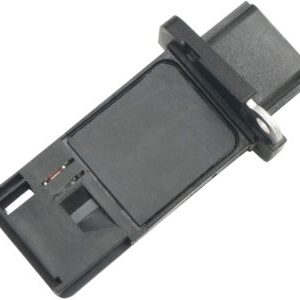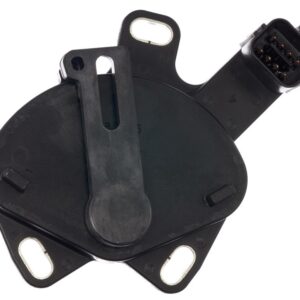Title: Crankshaft Sensor: The Silent Guardian of Engine Precision
In the intricate world of automotive engineering, where every revolution of the crankshaft is a heartbeat of power, the crankshaft sensor emerges as a silent sentinel, meticulously monitoring the engine’s rhythm with unwavering precision. Despite its diminutive size, this unassuming component plays a pivotal role in orchestrating engine performance, fuel efficiency, and reliability. In this blog, we’ll delve into the significance of the crankshaft sensor, how it works, its importance in engine operation, and its indispensable contribution to the driving experience.
### Unveiling the Crankshaft Sensor
The crankshaft sensor, also known as the crank position sensor (CKP sensor), is a vital component nestled within the engine assembly of modern vehicles. Positioned near the crankshaft, its primary function is to track the rotational speed and position of the crankshaft.
### How the Crankshaft Sensor Works
Operating on electromagnetic, Hall effect, or optical principles, the crankshaft sensor detects the motion of teeth or markers on the crankshaft’s flywheel or harmonic balancer. As the crankshaft rotates, these markers pass by the sensor, generating electrical impulses. These impulses are then transmitted to the engine control unit (ECU) or powertrain control module (PCM), providing real-time data on the crankshaft’s position and speed.
### Importance of the Crankshaft Sensor in Engine Operation
1. **Timing Control**: The crankshaft sensor enables precise timing control by providing essential data to the ECU or PCM. This data allows the engine management system to synchronize fuel injection, ignition timing, and other critical functions with the crankshaft’s position, optimizing combustion efficiency and engine performance.
2. **Misfire Detection**: By monitoring variations in crankshaft speed and position, the crankshaft sensor aids in detecting engine misfires. Irregularities in engine rotation can indicate misfires or other issues, prompting the ECU or PCM to take corrective action to maintain smooth engine operation.
3. **Engine Diagnostics**: The crankshaft sensor serves as a valuable diagnostic tool for identifying and diagnosing engine problems. Anomalies in crankshaft position or speed readings can help pinpoint issues such as crankshaft sensor failure, timing belt or chain problems, or engine mechanical issues, facilitating more efficient and accurate repairs.
### Signs of a Failing Crankshaft Sensor
– **Difficulty Starting**: A malfunctioning crankshaft sensor can cause difficulty starting the engine or prolonged cranking times.
– **Engine Stalling**: Erratic engine stalling or hesitation, especially during acceleration or at idle, may occur if the crankshaft sensor is failing.
– **Check Engine Light**: An illuminated check engine light on the dashboard may indicate a problem with the crankshaft sensor or related components.
### Conclusion
In the intricate tapestry of engine operation, the crankshaft sensor stands as a silent guardian, ensuring precision and reliability with each rotation of the crankshaft. From timing control to misfire detection and engine diagnostics, its role in shaping engine performance and reliability is indispensable. As automotive technology continues to advance, the importance of crankshaft sensors in achieving optimal engine operation remains undeniably critical, ensuring that vehicles navigate the roads with power, efficiency, and reliability.
In stock (can be backordered)
$29,137.67
Title: Crankshaft Sensor: The Silent Guardian of Engine Precision
In the intricate world of automotive engineering, where every revolution of the crankshaft is a heartbeat of power, the crankshaft sensor emerges as a silent sentinel, meticulously monitoring the engine’s rhythm with unwavering precision. Despite its diminutive size, this unassuming component plays a pivotal role in orchestrating engine performance, fuel efficiency, and reliability. In this blog, we’ll delve into the significance of the crankshaft sensor, how it works, its importance in engine operation, and its indispensable contribution to the driving experience.
### Unveiling the Crankshaft Sensor
The crankshaft sensor, also known as the crank position sensor (CKP sensor), is a vital component nestled within the engine assembly of modern vehicles. Positioned near the crankshaft, its primary function is to track the rotational speed and position of the crankshaft.
### How the Crankshaft Sensor Works
Operating on electromagnetic, Hall effect, or optical principles, the crankshaft sensor detects the motion of teeth or markers on the crankshaft’s flywheel or harmonic balancer. As the crankshaft rotates, these markers pass by the sensor, generating electrical impulses. These impulses are then transmitted to the engine control unit (ECU) or powertrain control module (PCM), providing real-time data on the crankshaft’s position and speed.
### Importance of the Crankshaft Sensor in Engine Operation
1. **Timing Control**: The crankshaft sensor enables precise timing control by providing essential data to the ECU or PCM. This data allows the engine management system to synchronize fuel injection, ignition timing, and other critical functions with the crankshaft’s position, optimizing combustion efficiency and engine performance.
2. **Misfire Detection**: By monitoring variations in crankshaft speed and position, the crankshaft sensor aids in detecting engine misfires. Irregularities in engine rotation can indicate misfires or other issues, prompting the ECU or PCM to take corrective action to maintain smooth engine operation.
3. **Engine Diagnostics**: The crankshaft sensor serves as a valuable diagnostic tool for identifying and diagnosing engine problems. Anomalies in crankshaft position or speed readings can help pinpoint issues such as crankshaft sensor failure, timing belt or chain problems, or engine mechanical issues, facilitating more efficient and accurate repairs.
### Signs of a Failing Crankshaft Sensor
– **Difficulty Starting**: A malfunctioning crankshaft sensor can cause difficulty starting the engine or prolonged cranking times.
– **Engine Stalling**: Erratic engine stalling or hesitation, especially during acceleration or at idle, may occur if the crankshaft sensor is failing.
– **Check Engine Light**: An illuminated check engine light on the dashboard may indicate a problem with the crankshaft sensor or related components.
### Conclusion
In the intricate tapestry of engine operation, the crankshaft sensor stands as a silent guardian, ensuring precision and reliability with each rotation of the crankshaft. From timing control to misfire detection and engine diagnostics, its role in shaping engine performance and reliability is indispensable. As automotive technology continues to advance, the importance of crankshaft sensors in achieving optimal engine operation remains undeniably critical, ensuring that vehicles navigate the roads with power, efficiency, and reliability.
| Weight | 0.03 kg |
|---|---|
| Dimensions | 8 × 7 cm |
| Warehouse | Inventory at warehouse 2 |


Get E-mail updates about our latest products and special offers.
Sensors and More is Jamaica’s ultimate online auto parts store. Established in 2020, we specialize in genuine electrical parts for Japanese, Read more…
Reviews
There are no reviews yet.